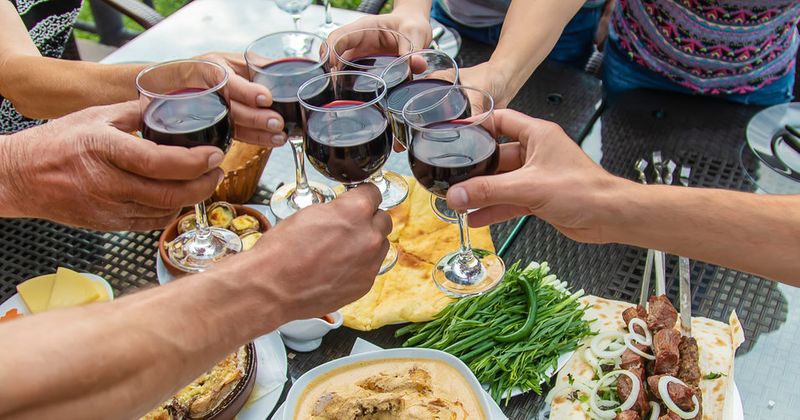For every bottle of red wine, there is a perfect food pairing. While there’s no strict rule as to what you should eat with your favourite red wine, especially because everyone has different palettes and preferences, there are certain reasons why wine connoisseurs make specific food and wine pairing suggestions.
If you’re new to the world of developing your wine palette, that’s okay! Half the fun is understanding what notes to look for, learning what the different bodies of wine are, and what flavours best match its notes.
The Meanings Behind The Different Bodies of Red Wine
Have you ever been sent to the liquor store with instructions to “buy red wine” but you aren’t sure what kind to get? Surely there has to be certain meanings behind each kind.
We’re here to tell you that yes, each kind is completely different. Below, we’ll go over the differences (in alphabetical order) between the types of red wines so you’ll never have to feel confused about which kind to buy again.
Baco Noir (Full-Bodied)
These types of grapes do well in a cooler climate, therefore, they thrive in Ontario (though they originated in France). They’re known for being very flavourful with earthy and spicy notes which is why they’re used to create drier red wines.
Cabernet Sauvignon (Full-Bodied)
These types of grapes thrive in both humid and cooler environments. They’re the most common type of grape that mainly come from places like Napa Valley, Australia, and the Niagara Region. They’re a little more fruity, acidic, and a deeper colour of red.
Cabernet Franc (Medium-Bodied)
If you’re looking for a unique combination, you’ll love this type of red wine that’s popularly found in Niagara. It’s often mixed with Merlot or Cabernet Sauvignon grapes and then aged in oak barrels. The oak barrels bring out the unique flavours even more and provide a more “dry” structure to the wine.
Merlot (Full-Bodied)
This is another very popular type of grape because of its ease to mix with others and to try drinking for beginners. It’s often soft, smooth, sweet, and makes a great math for any dish or dessert.
Malbec (Full-Bodied)
Malbec grapes are most famously known for growing in Argentina even though they originated in France. Because of these grapes being darker and thicker skinned, their sweetness and fruity flavours create a less-dry red wine.
Pinot Noir (Light-Bodied)
Known as one of the lighter reds, Pinot Noir wine is fruity, smoothy, and much like Merlot, it can make the perfect match for any dish or dessert. But did you know that Pinot Noir grapes are the hardest to grow? Because of their thin skin, they’re more susceptible to being damaged by temperatures or by themselves since they grow tightly together.
Zinfandel (Full-Bodied)
Zinfandel is largely grown in the United States in more humid climates like Napa Valley and Lodi. It makes for a very fruity red wine but on the other hand, has subtle flavours of licorice and tobacco. It’s another wine that’s very easy to drink, making it the perfect pairing for most dishes.
Note: Full, medium and light-bodied refers to the alcohol content. The fuller the body of wine, the higher alcohol content it contains (more than 13.5%). The lighter the body of wine, the lower the alcohol content (less than 12.5%).
The Best Food & Red Wine Pairings
Nothing pairs together more perfectly than wine and food, especially after you’ve had a long day or you haven’t spent a night out (or in) with your friends in a long time. But how do you decide what to order with your glass of wine? Remember, the choice is completely up to you and your specific preferences, but here are the best wine and food pairings strictly based on the types of notes the red wine contains.
Hearty Dishes
Red meat, whether it be land, grilled steak, or burgers, make a great match for Cabernet Sauvignon. This type of full-bodied red wine has strong, deep and fruity flavours, so pairing it with equally strong meat flavours will make for a delicious dinner you won’t soon forget. The meat can also dial down the acidity and sweetness of the wine if that’s what you desire.
If you’re opting for a hearty stew such as beef bourguignon, for example, Merlot is a great wine pairing to bring out the soft flavours of both the dish and the wine. It also isn’t a heavy wine, meaning it’s easy to drink it with heavier, meatier dishes.
Fish Dishes
Most people think that fish only pairs well with white wine, but that’s not true. Most red wines actually make a great wine and food pairing, particularly if it’s a sweet red wine. For example, if you’re having salmon, Zinfandel or Merlot can both complement and tone down the fishy taste as they aren’t as dry. For white fish pairings or even pasta dishes with lobster or shrimp, choose a wine with higher acidity to balance with the tomatoes.
Vegetarian Dishes
The secret for vegetable and wine pairing? Earthy wines make the perfect pairing for earthy vegetables. For example, mushrooms, butternut squash, kale, turnips, carrots, onions, etc.
Extra tip: If you’re craving spicy, vegetarian stews, bold red wine can often intensify the spice even further, so you may prefer pairing it with a softer, sweeter red wine like Malbec or Pinot Noir.
Cheese
Red wine and cheese pairings are classic, delicious, and a simple party pleaser. Like with the other foods above, it’s best to pair heavy cheese with heavy wine, light cheese with light wine, and dry/aged cheese with dry wine.
Examples: Cabernet Franc and goat cheese, Pinot Noir with gruyere, and Cabernet Sauvignon with aged cheddar.
Looking For The Perfect Bottle Of Red Wine?
When it comes to pairing wine with food, our professionals here at The Hare Wine Co. can help you find the best bottle of wine for your needs. No matter what your taste buds are craving (sweet, bold, fruity or earthy) we carry a variety of 100% VQA Ontario wines that are handcrafted with you in mind. We make pairing wine and food easy. Stop by our vineyard in Niagara-on-the-Lake where you can taste test our wines in a beautiful and relaxing private room or on our patio that overlooks Niagara’s famous wine country.







